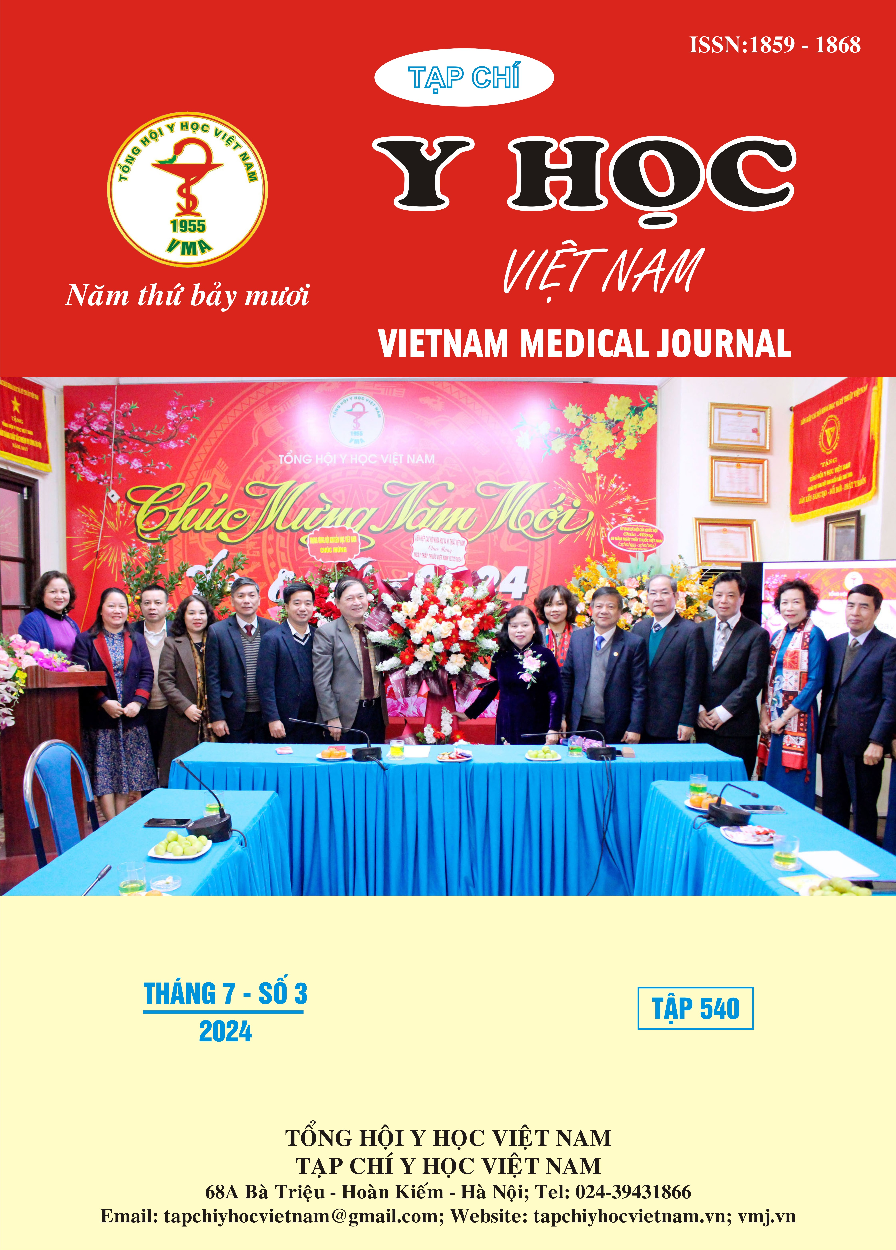STUDY ON PROGNOSTIC FACTORS OF MORTALITY IN PEDIATRIC MASSIVE BURN PATIENTS UNDER 6 YEARS
Main Article Content
Abstract
Objectives: Evaluation of factors predicting mortality in massive burn patients ≤ 6 years old. Subjects and methods: Retrospective study on 288 burn pediatric patients (0-6 years old), burn extent ≥ 30% of total burn surface area (TBSA) treated at the National Burns Hospital from 1/1/2018 to 31/12/ 2022. Patients were divided into two groups of survival and death, and were compared in terms of the characteristics, manifestation and outcome. Results: Mortality rate was 7%. Multivariate analysis showed that the increased deep burn area and hospitalized 24 hours after burn were independently associated with mortality (p < 0,05). increase 1% of a deep burn area increases the risk of death by 0.11 units, hospitalization after 24 hours of burn increases the risk of death by 1.78 units. The prognostic value of mortality in massive burn pediatric patients ≤ 6 years old of deep burn area and hospitalized 24 hours after burn with area under the curve (AUC) is 0.73 and 0.64, respectively. When combining hospitalized 24 hours after burn and deep burn area, the predictive value of mortality increases significantly, at a good level (AUC = 0.84; p < 0.05). The Hosmer - Lemeshow test showed that the regression equation combining hospitalized 24 hours after burn and deep burn area was consistent with death (ꭓ2 = 8.62; p > 0.05). Conclusion: The increase deep burns area and hospitalized 24 hours after burn increases the risk of death. The mortality prognostic value of hospitalized 24 hours after burn combined with deep burn area were at a good level.
Article Details
Keywords
massive burn children, mortality.
References
2. Nia K.S., Razzaghi A., Rahmani F. et al. (2020) Pediatric Burn Outcome; Diagnostic Value of R-Baux and P-Baux Scores. Research Square, 1-14.
3. Svee A., Jonsson A., Sjöberg F. et al. (2016) Burns in Sweden: temporal trends from 1987 to 2010. Annals of burns and fire disasters, 29 (2), 85.
4. Chelidze K.I., Lim C.C., Peck R.N. et al. (2016) Predictors of mortality among pediatric burn patients in East Africa. Journal of Burn Care & Research, 37 (2), e154-e160.
5. Tiruneh C.M., Belachew A., Mulatu S. et al. (2022) Magnitude of mortality and its associated factors among Burn victim children admitted to South Gondar zone government hospitals, Ethiopia, from 2015 to 2019. Italian journal of pediatrics, 48 (1), 12.
6. Martens S., Romanowksi K., Palmieri T. et al. (2023) Massive Pediatric Burn Injury: A 10-Year Review. Journal of Burn Care & Research, 44 (3), 670-674.
7. Chalya P.L., Mabula J.B., Dass R.M. et al. (2011) Pattern of childhood burn injuries and their management outcome at Bugando Medical Centre in Northwestern Tanzania. BMC research notes, 4, 1-10.
8. Droussi H., Benchamkha Y., Ouahbi S. et al. (2013) Epidemiology and treatment of paediatric burns in a large children’s hospital in Morocco: Analysis of 394 cases: Épidémiologie et traitement des brûlures pédiatriques dans un grand hôpital pour enfants au Maroc: l’analyse de 394 cas. African Journal of Emergency Medicine, 3 (3), 110-115.


